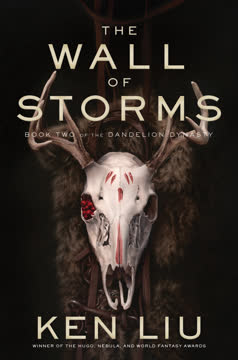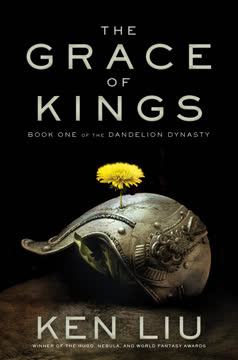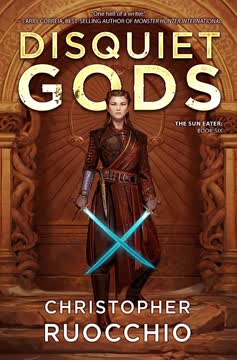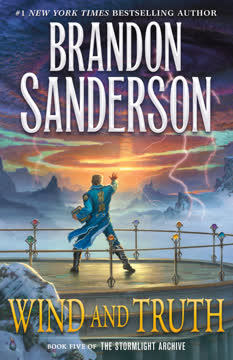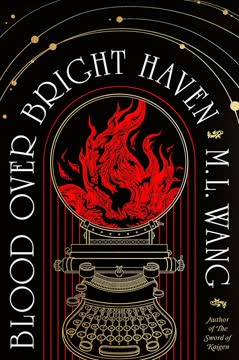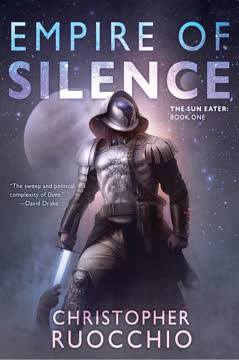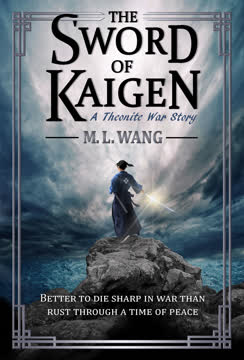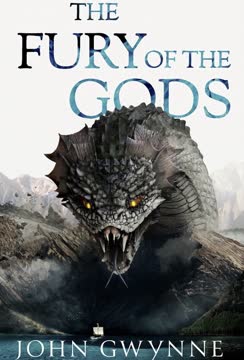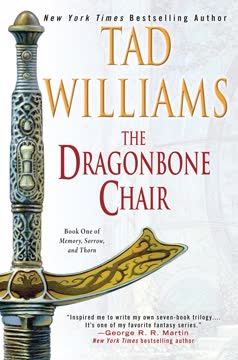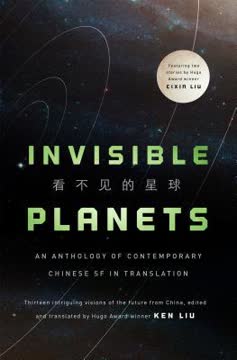Plot Summary
Whispers of Discontent and Rebellion
In the bustling city of Pan, a group of scholars protests the results of the Grand Examination, accusing the system of bias towards candidates from Haan. Their voices echo through the city, threatening the peace of the Harmonious City. This unrest highlights the underlying tensions within the empire, as the scholars demand transparency and fairness, challenging the status quo and setting the stage for broader conflicts.
A Scholar's Bold Challenge
In the Grand Audience Hall, Zomi Kidosu, a young scholar from Dasu, boldly challenges the fairness of the examination process before Emperor Ragin. Her argument exposes the inherent biases favoring certain regions, resonating with the emperor and sparking intrigue. Zomi's courage and insight mark her as a symbol of hope and change, questioning the established order and advocating for justice and equality.
Imperial Court's Tense Dynamics
The Imperial court is a stage for political maneuvering, with Empress Jia and Queen Gin of Géjira clashing over policies and influence. The empress pushes for stricter adherence to Imperial edicts, while Gin represents the nobles' interests. Their tension underscores the delicate balance of power and the complex dynamics that govern the empire, revealing the intricate dance of influence and authority.
A Scholar's Ingenious Presentation
Naroca Huza, a scholar from Géjira, captivates the court with a mesmerizing presentation using a mechanical device that brings images to life. His demonstration advocates for trade and commerce, highlighting the potential to unite the islands of Dara. This technical marvel and strategic argument for economic reform leave a lasting impression, showcasing the power of innovation and the potential for progress.
The Emperor's Dilemma Unfolds
Emperor Kuni Garu is confronted with a rebellion led by Théca Kimo, a former ally. As tensions rise, Kuni grapples with betrayal and the loyalty of those around him. The situation is complicated by Empress Jia's actions, suggesting a deeper political game. Kuni's internal struggle highlights the complexities of leadership and the burden of maintaining peace in a fractured empire.
The Strangers from the Sea
A fleet of massive ships, carrying the Lyucu, arrives on the shores of Dasu, posing a new threat to the empire. Their advanced technology and fearsome beasts challenge existing power structures, forcing the empire to confront an external threat that could unite or further divide its people. The Lyucu's presence introduces a new dynamic to the political landscape, demanding strategic responses.
A Scholar's Heartbreaking Sacrifice
Luan Zya, captured by the Lyucu, is forced to reveal the secrets of the Wall of Storms. Despite torture, he resists until the Lyucu threaten his friend Oga Kidosu. Luan's decision to comply, driven by compassion, leads to the Lyucu's successful invasion of Dara. His sacrifice underscores the moral dilemmas faced by those caught in the crossfire of war, highlighting the personal costs of conflict.
The Marshal's Final Stand
In a fierce battle against the Lyucu, Gin Mazoti leads the charge with innovative tactics and new weapons. Despite initial success, the tide turns against Dara. In a desperate move, Gin sacrifices herself to kill Pékyu Tenryo, the Lyucu leader, ensuring a temporary victory for Dara. Her death becomes a rallying point, inspiring the remaining forces to continue the fight. Gin's legacy is one of courage and selflessness, embodying the spirit of resistance.
A New Dawn for Dara
With the Lyucu temporarily repelled, Théra steps into a leadership role, navigating the complex political landscape. She balances the need for peace with the necessity of preparing for future conflicts. Her vision for Dara includes fostering alliances and strengthening defenses. Théra's leadership marks a new era for Dara, one that embraces innovation and inclusivity while honoring the sacrifices of those who came before.
Characters
Zomi Kidosu
Zomi is a young woman from Dasu who defies expectations with her intelligence and courage. Despite her humble background and physical challenges, she rises to prominence through her sharp mind and determination. Her challenge to the fairness of the Grand Examination reveals her commitment to justice and equality, making her a symbol of hope and change.
Emperor Ragin (Kuni Garu)
Emperor Ragin, formerly Kuni Garu, is a leader who values diverse perspectives and encourages open dialogue. He listens carefully to the arguments presented by the scholars, weighing their merits with an open mind. His leadership style is characterized by a balance of authority and empathy, seeking to maintain harmony in his realm.
Empress Jia
Empress Jia is a powerful figure in the court, advocating for policies that strengthen the central authority of the empire. Her interactions with Queen Gin reveal her strategic acumen and her ability to navigate the complex dynamics of power. She is a formidable presence, respected and feared by those around her.
Queen Gin of Géjira
Queen Gin is a strong and independent leader who represents the interests of the nobles. She is unafraid to challenge the empress and assert her own views, highlighting the tension between the central government and the semi-autonomous fiefs. Her loyalty to her people and her willingness to stand up for them make her a key player in the court's power struggles.
Luan Zya
Luan Zya is a former adviser to the emperor who now travels the islands in search of knowledge. He is Zomi's mentor, guiding her with patience and wisdom. His passion for learning and discovery is infectious, inspiring Zomi to pursue her own path of enlightenment.
Naroca Huza
Naroca is a scholar from Géjira who impresses the court with his inventive presentation. His advocacy for trade and commerce reflects his forward-thinking approach and his desire to see Dara prosper through economic growth. He is a symbol of the new generation of scholars who seek to challenge traditional norms and push for progress.
Pékyu Tenryo
Pékyu Tenryo is the leader of the Lyucu, whose invasion threatens Dara's existence. His strategic brilliance and ruthless tactics make him a formidable adversary. Tenryo's death at the hands of Gin Mazoti marks a turning point in the conflict, inspiring Dara's forces to continue the fight.
Princess Théra
Théra steps into a leadership role, balancing the need for peace with the preparation for future conflicts. Her journey to forge alliances beyond Dara's shores signifies a new chapter for the empire. Théra's vision and courage promise to bring new opportunities and challenges to Dara.
Gin Mazoti
Gin Mazoti is a former marshal who sacrifices herself in a pivotal battle against the Lyucu. Her strategic brilliance and unwavering commitment to Dara's freedom make her a legendary figure. Gin's death becomes a symbol of resistance and inspires others to continue the fight for justice and liberty.
Consort Risana
Consort Risana is a victim of Empress Jia's ruthless political maneuvering. Her sacrifice underscores the moral ambiguities of leadership and the personal costs of power. Risana's death serves as a reminder of the sacrifices made for the greater good.
Plot Devices
Grand Examination
The Grand Examination is a central plot device that serves as a test of the scholars' knowledge, creativity, and moral integrity. It is a symbol of meritocracy and the pursuit of excellence, but also a source of tension and conflict as it reveals underlying biases and inequalities. The examination is a catalyst for change, challenging the status quo and prompting a reevaluation of the values and structures that govern Dara.
Magic Mirrors
The magic mirrors used by rebels to incite fear are revealed to be a clever manipulation of light and surface tension. Théra's discovery of their secret demystifies the rebels' supposed supernatural power and highlights the importance of knowledge and innovation in overcoming challenges. The mirrors serve as a symbol of the power of perception and the potential for deception.
Lyucu Invasion
The arrival of the Lyucu introduces a new dynamic to the political landscape, forcing the empire to confront an external threat that could unite or further divide its people. The Lyucu's advanced technology and fearsome beasts challenge the existing power structures and highlight the need for unity and strategic thinking in the face of adversity.
Wall of Storms
The Wall of Storms serves as a formidable barrier between Dara and the Lyucu, representing both a physical and strategic challenge. Its unpredictable nature and the secrets it holds are central to the Lyucu's invasion plans and the defense of Dara.
Silkmotic Force
The silkmotic force is a new weapon developed to combat the Lyucu's garinafins. Its use in battle highlights the importance of innovation and creativity in warfare. The silkmotic force symbolizes the transformative power of knowledge and technology in shaping Dara's future.
Analysis
"The Wall of Storms" by Ken Liu is a rich tapestry of political intrigue, personal sacrifice, and the relentless pursuit of knowledge. The narrative explores the complexities of leadership and the moral ambiguities inherent in wielding power. Through the lens of characters like Zomi Kidosu, Empress Jia, and Princess Théra, the story delves into themes of justice, equality, and the transformative power of innovation. The arrival of the Lyucu and the opening of the Wall of Storms symbolize both threats and opportunities, challenging the characters to adapt and evolve. Liu's work is a poignant reminder of the enduring human spirit and the potential for growth and change in the face of adversity.
Last updated:
FAQ
Synopsis & Basic Details
What is The Wall of Storms about?
- Epic Silkpunk Saga Continues: The Wall of Storms by Ken Liu is the second volume in The Dandelion Dynasty, continuing the saga of Emperor Ragin (Kuni Garu) as he strives to solidify his empire, Dara, against internal dissent and a looming external threat. The narrative intricately weaves together political intrigue, technological innovation, and deep philosophical debates, exploring the challenges of governance in a diverse and rapidly changing world.
- Internal Strife & Succession: The story delves into the complex dynamics of Kuni's court, particularly the growing rivalry between his wives, Empress Jia and Consort Risana, and their respective sons, Prince Timu and Prince Phyro, for succession. This internal struggle is exacerbated by the ambitions of Kuni's generals and ministers, who jockey for influence and power, testing the fragile peace Kuni has established.
- Invasion from Beyond the Wall: A new, formidable enemy, the Lyucu, emerges from beyond the mythical Wall of Storms, threatening Dara with their fire-breathing garinafins and ruthless military tactics. The invasion forces Dara's leaders to confront their deepest fears, make impossible sacrifices, and innovate new technologies and strategies to defend their homeland, culminating in a desperate struggle for survival.
Why should I read The Wall of Storms?
- Deep Philosophical Exploration: Readers seeking a fantasy epic that transcends typical sword-and-sorcery will find The Wall of Storms intellectually stimulating. Ken Liu masterfully integrates the Hundred Schools of philosophy (Moralism, Fluxism, Patternism, Incentivism) into the characters' motivations and the empire's governance, offering profound insights into human nature, societal structures, and the ethics of power.
- Rich World-building & Innovation: The novel expands on the unique "silkpunk" aesthetic, showcasing ingenious inventions like mechanical crubens, collapsible airships, and silkmotic weapons. The detailed descriptions of Dara's diverse islands, cultures, and technological advancements create a vibrant and immersive world that feels both fantastical and grounded in plausible scientific principles.
- Complex, Evolving Characters: The characters are morally ambiguous and undergo significant psychological development, making their journeys compelling. From Empress Jia's ruthless pragmatism to Zomi Kidosu's quest for justice and Théra's emergence as a visionary leader, their internal conflicts and evolving relationships drive the narrative, offering a nuanced exploration of love, duty, and sacrifice.
What is the background of The Wall of Storms?
- Post-Unification Dara: The story is set years after Kuni Garu unified the Islands of Dara, establishing the Dandelion Dynasty. While the Xana Empire has fallen and the chaos of the Chrysanthemum-Dandelion War has subsided, the empire is still young and its peace fragile, grappling with the integration of diverse cultures and the ambitions of newly enfeoffed nobles.
- Philosophical Foundations: Dara's society is heavily influenced by the Hundred Schools of philosophy, particularly the four major ones: Moralism (Kon Fiji), Fluxism (Ra Oji), Patternism (Na Moji), and Incentivism (Gi Anji). These schools provide frameworks for understanding the world, governance, and individual conduct, often clashing in their interpretations and applications, shaping political debates and personal choices.
- Geographical & Mythological Context: The world of Dara is a collection of islands, each with distinct cultures, resources, and patron gods. The mythical "Wall of Storms" to the north serves as a physical and symbolic barrier, separating Dara from unknown lands and the Lyucu, whose own creation myths and deities (All-Father, Every-Mother, Péa, Cudyufin, Nalyufin) offer a contrasting worldview.
What are the most memorable quotes in The Wall of Storms?
- "Talent is like a pretty feather in the tail of a peacock, daughter. It brings joy to the powerful but only sorrow to the bird." (Chapter 7): This quote, spoken by Aki Kidosu to young Zomi, encapsulates the precariousness of talent for the powerless in a hierarchical society. It foreshadows Zomi's struggles with ambition and the dangers of being noticed by those in power, a central theme in The Wall of Storms regarding meritocracy and social mobility.
- "The grace of kings does not glitter like precious gold or shine like gentle jade. It's forged from iron and blood." (Chapter 61): Empress Jia delivers this stark declaration to Risana, revealing her pragmatic and often brutal philosophy of leadership. This quote highlights the harsh realities of maintaining power and the sacrifices required, contrasting with Kuni's more idealistic vision of "The Grace of Kings" and offering a key insight into Empress Jia's motivations.
- "True courage comes not from being certain and unafraid, but from doing what must be done even while being terrified and full of doubts." (Chapter 52): Soto Zyndu offers this profound definition of courage to Gin Mazoti, urging her to lead Dara's resistance despite overwhelming odds. This quote challenges conventional notions of heroism and underscores the emotional depth of characters who act out of duty and love, even in the face of despair, a powerful theme in The Wall of Storms about resilience.
What writing style, narrative choices, and literary techniques does Ken Liu use?
- Polyphonic Narrative Structure: Liu employs a multi-perspective narrative, shifting between numerous characters, including Kuni, Jia, Risana, Gin, Zomi, Théra, and Luan, as well as minor figures and even the gods. This allows for a comprehensive view of events, revealing conflicting motivations and interpretations, enriching the analysis of the story's complex political landscape.
- Seamless Integration of Philosophy and Technology: The novel's "silkpunk" aesthetic is not merely decorative; it's deeply interwoven with the philosophical underpinnings. Technological innovations (like airships, mechanical crubens, silkmotic devices) are often direct applications or reflections of the Hundred Schools' principles, demonstrating how ideas shape the material world and vice versa, a core literary technique that defines the series.
- Intertextual Allusions and Myth-making: Liu frequently references ancient Ano sagas, folk tales, and historical events within the narrative, blurring the lines between history, myth, and propaganda. Characters often interpret these stories to justify their actions or understand their world, highlighting the power of narrative in shaping reality and perception. This technique adds layers of symbolism and invites readers to question the "truth" of historical accounts.
Hidden Details & Subtle Connections
What are some minor details that add significant meaning?
- Children's Nursing Names: The nursing names of Kuni's children (Toto-tika, Rata-tika, Hudo-tika, Ada-tika) are a subtle callback to the first book, The Grace of Kings, and a cultural detail that humanizes the Imperial family. This detail, often overlooked, emphasizes their childhood innocence before they are thrust into the harsh realities of court politics and war, highlighting the contrast with their later, more formal roles.
- Luan's Gitré Üthu: Luan Zya's constantly carried book, Gitré Üthu ("know thyself"), initially seems a personal affectation but becomes a crucial plot device and symbol. Its blank pages after his journey through the Wall of Storms, and later his coded message within it, represent both a cleansing of past burdens and a testament to his enduring intellect, revealing his deep character motivations and his commitment to knowledge.
- The Three-Legged Jug: The pub where the Imperial children first encounter Zomi Kidosu, the "Three-Legged Jug," is a recurring, seemingly minor setting that gains symbolic weight. It represents a space of commonality and unexpected encounters, where social hierarchies are temporarily suspended, allowing for genuine human connection and the forging of unlikely alliances, a subtle commentary on social class and opportunity in Dara.
What are some subtle foreshadowing and callbacks?
- Zomi's Lightning Scar: Zomi's childhood lightning strike and subsequent paralysis, detailed in Chapter 5, is a profound piece of foreshadowing for her later connection to the silkmotic force. This early trauma, which she initially views as a curse, becomes the foundation for her unique understanding of electrical phenomena, directly leading to the development of Dara's most potent weapon against the Lyucu. It's a powerful example of how personal adversity can lead to unexpected strengths, a key theme in The Wall of Storms.
- Kuni's "Cruben-Wolf" Analogy: Kita Thu's theatrical presentation of Kuni's empire as a "cruben-wolf" (Chapter 11), a creature at home nowhere, subtly foreshadows the empire's inherent instability and Kuni's own internal conflicts. This early critique of Kuni's hybrid governance system (part noble fiefs, part Imperial provinces) highlights the deep-seated tensions that later erupt into rebellion and challenge the empire's unity, offering a critical analysis of Kuni's political choices.
- The Gods' Debates: The intermittent, overheard conversations of the gods (e.g., Chapters 2, 40, 45, 60) serve as subtle foreshadowing and thematic commentary. Their bickering and philosophical discussions often mirror the mortal conflicts, hinting at divine interventions or, conversely, their detachment. Their debate over the "Wall of Storms" and Luan's passage through it, for instance, foreshadows the Lyucu invasion and the changing nature of divine influence in Dara.
What are some unexpected character connections?
- Luan Zya and Oga Kidosu: The revelation that Luan Zya and Oga Kidosu (Zomi's father) were imprisoned together by the Lyucu (Chapter 47) is a deeply emotional and unexpected connection. This shared captivity and the exchange of their life stories forge a profound bond, making Luan Zya Zomi's "parent of the mind" and Oga her "author of the body." This connection underscores the personal stakes of the Lyucu invasion and provides Zomi with a powerful, tragic motivation for her actions.
- Jia's Ladies-in-Waiting as Spies: The seemingly minor detail that Empress Jia's former ladies-in-waiting, like Ragi, are now married to influential figures (Chapter 21) reveals a sophisticated network of loyalty and intelligence. These women, often underestimated, become crucial conduits for Jia's covert operations, demonstrating her long-term strategic planning and the hidden power dynamics within the court, offering a fresh perspective on Empress Jia's motivations.
- Théra's Connection to Kikomi: Princess Théra's insistence on studying Princess Kikomi (Chapter 21), a figure often maligned in Dara's history, reveals a deeper connection to themes of misunderstood female agency and sacrifice. Théra's reinterpretation of Kikomi's actions as strategic rather than romantic foreshadows her own future choices and her challenge to traditional gender roles in leadership, providing a nuanced character analysis of Théra.
Who are the most significant supporting characters?
- Soto Zyndu, Jia's Confidante: Soto acts as Empress Jia's moral compass and loyal enforcer, often questioning Jia's ruthless methods while remaining steadfastly by her side. Her role in guiding the Imperial children and her deep understanding of Jia's complex motivations make her a crucial, albeit often silent, force in palace politics. Her unwavering loyalty highlights the personal cost of Jia's grand schemes.
- Kita Thu, the Mathematical Administrator: Initially presented as a rigid Moralist scholar, Kita Thu evolves into a brilliant leader of the Imperial laboratories, adept at fulfilling unusual needs. His ingenuity in designing the garinafin dissection lab and his collaboration with Théra and Zomi are vital to Dara's defense, showcasing the practical application of scholarly talent beyond traditional governance.
- Miza Crun, the Street Magician: Miza Crun, the inventor of the silkmotic devices, is a seemingly minor character who provides the key technological breakthrough against the garinafins. His background as a street performer and healer, combined with his scientific curiosity, embodies the novel's blend of folk wisdom and advanced engineering, demonstrating how unexpected sources of knowledge can yield powerful solutions.
Psychological, Emotional, & Relational Analysis
What are some unspoken motivations of the characters?
- Jia's Quest for Institutional Stability: Beyond simply securing Timu's succession, Empress Jia's deepest motivation is to dismantle the reliance on individual charisma and loyalty that defined Kuni's reign, replacing it with robust, impersonal institutions. Her ruthless actions against the nobles and her manipulation of Rin Coda and Gin Mazoti stem from a belief that only a system, not individuals, can guarantee lasting peace, a core theme in The Wall of Storms and a complex aspect of Empress Jia's motivations.
- Kuni's Guilt and Atonement: Emperor Ragin's indulgence of his children, particularly Phyro, and his reluctance to confront Jia's machinations are subtly driven by guilt over his past betrayals (of Mata Zyndu and Timu's mother, Jia, during the war). He seeks to atone by allowing his family to pursue their own paths, even if it means compromising his empire's stability, revealing a profound internal conflict in Emperor Ragin (Kuni Garu)'s character analysis.
- Gin's Pride and Need for Validation: Queen Gin's initial refusal to fight for Dara, despite the Lyucu threat, is rooted in her profound pride and a deep-seated need for Kuni to publicly acknowledge her innocence and value. Her "stubbornness" is less about disloyalty and more about a demand for justice and recognition for her sacrifices, highlighting the emotional complexities of her relationship with Kuni and her character motivations.
What psychological complexities do the characters exhibit?
- Timu's Search for Identity: Prince Timu struggles with a profound sense of inadequacy and a desperate need for his father's approval, leading him to embrace the Lyucu's "Audacious Freedom" philosophy. His initial bookishness and later "betrayal" are complex psychological responses to feeling overshadowed and misunderstood, showcasing his journey from a dutiful but timid prince to a figure seeking his own path, a key aspect of Prince Timu's character analysis.
- Zomi's Internalized Class Conflict: Zomi Kidosu, despite her brilliance, grapples with internalized class shame and a fierce pride in her humble origins. Her initial rudeness towards Théra, her impulsive theft of the examination pass, and her later self-recrimination after betraying Gin are all manifestations of her struggle to reconcile her peasant identity with her rise to power, revealing the psychological impact of social mobility and the themes in The Wall of Storms related to class.
- Luan Zya's Detachment and Compassion: Luan Zya, the brilliant strategist, exhibits a complex detachment from political intrigue, preferring the "solitude of the wilderness." Yet, his ultimate sacrifice for Oga Kidosu and his coded message for Zomi reveal a deep, underlying compassion that contradicts his intellectual aloofness. This duality highlights the tension between rational calculation and human emotion, a central aspect of Luan Zya's character analysis.
What are the major emotional turning points?
- Kuni's Abdication and Sacrifice: Emperor Ragin (Kuni Garu)'s public abdication and subsequent self-sacrifice by plunging into the sea (Chapter 58) is a pivotal emotional turning point. Driven by guilt over past decisions and a desperate need to inspire his people, he chooses a dramatic, symbolic death. This act, witnessed by Théra, profoundly shapes the future of Dara and the motivations of his children, marking a tragic but heroic moment in Emperor Ragin (Kuni Garu)'s character arc.
- Gin's Acceptance of Sacrifice: Marshal Gin Mazoti's decision to lead the hopeless battle against the Lyucu, knowing it means her death and the potential tarnishing of her name (Chapter 52), is a powerful emotional climax. Her conversation with Soto Zyndu, where she confronts her pride and accepts the necessity of sacrifice for Dara, reveals her profound loyalty and courage, making her death a truly heroic act and a key moment in Gin Mazoti's motivations.
- Théra and Zomi's Confession of Love: The intimate moment between Princess Théra and Zomi Kidosu where they confess their love (Chapter 59) is a significant emotional turning point, offering a counterpoint to the pervasive political and military struggles. This personal connection, born amidst shared trauma and intellectual collaboration, symbolizes hope for a future Dara that values diverse forms of love and partnership, enriching the themes in The Wall of Storms about relationships and identity.
How do relationship dynamics evolve?
- Kuni and Jia's Divergent Paths: Kuni and Jia's relationship evolves from a loving partnership to one of profound ideological divergence and mutual manipulation. While Kuni values personal loyalty and compromise, Jia prioritizes institutional stability, even at the cost of personal relationships. Their final, unspoken understanding before Kuni's death highlights the tragic depth of their love and their differing visions for Dara, a central relationship analysis in the novel.
- Théra and Zomi's Intellectual and Romantic Bond: The relationship between Princess Théra and Zomi Kidosu transforms from a mentor-protégée dynamic to a deep intellectual partnership and eventually a romantic one. Their shared passion for knowledge, engineering, and a just Dara, combined with their mutual respect and vulnerability, creates a powerful bond that challenges societal norms and offers a vision of progressive leadership, a key relationship analysis and character development for both.
- Timu and Tanvanaki's Coerced Affection: Prince Timu's relationship with Lyucu Princess Tanvanaki begins as a forced alliance but evolves into a complex, ambiguous affection. While initially a tool of Lyucu conquest, their bond, particularly after the birth of their child, represents a potential path to reconciliation between the two peoples, albeit one born from violence and manipulation. This dynamic explores the blurred lines between love, duty, and survival in wartime, a crucial character motivation for Timu.
Interpretation & Debate
Which parts of the story remain ambiguous or open-ended?
- The True Nature of Divine Intervention: While the gods of Dara frequently comment on mortal affairs and sometimes appear to intervene (e.g., Lutho saving Luan, Tututika's birds, Fithowéo's guidance), the extent and nature of their direct influence remain ambiguous. Are they truly guiding events, or are their "interventions" merely symbolic reflections of mortal actions and beliefs? This leaves readers to debate the role of fate versus free will, a central theme in The Wall of Storms.
- The Long-Term Success of Théra's Alliance: Princess Théra's decision to marry Prince Takval of Agon and lead an expedition to Ukyu and Gondé is presented as a hopeful new path, but its ultimate success is left open-ended. The challenges of integrating two vastly different cultures and overcoming centuries of conflict are immense, leaving the reader to ponder whether this alliance will truly bring lasting peace or merely sow the seeds for future strife, a key point for The Wall of Storms ending explained.
- The Morality of Jia's Actions: Empress Jia's ruthless political maneuvering, including her manipulation of Rin Coda and her role in Gin Mazoti's downfall, is deeply controversial. While she claims her actions are for the greater good of Dara's institutional stability, the human cost is immense. The novel leaves it to the reader to judge whether her ends justify her means, prompting a debate on the ethics of leadership and the nature of "good" governance, a significant aspect of Empress Jia's motivations analysis.
What are some debatable, controversial scenes or moments in The Wall of Storms?
- Timu's "Betrayal" and Marriage to Tanvanaki: Prince Timu's decision to marry Lyucu Princess Tanvanaki and become "Emperor Thaké" is highly debatable. Is it a genuine betrayal of Dara and his family, or a pragmatic attempt to find a path to peace and protect his people from further bloodshed? His internal struggle and eventual embrace of Tanvanaki's philosophy challenge traditional notions of loyalty and patriotism, inviting readers to consider the complexities of survival and
Hidden Details & Subtle Connections
What are some minor details that add significant meaning?
- Children's Nursing Names: The nursing names of Kuni's children (Toto-tika, Rata-tika, Hudo-tika, Ada-tika) are a subtle callback to the first book, The Grace of Kings, and a cultural detail that humanizes the Imperial family. This detail, often overlooked, emphasizes their childhood innocence before they are thrust into the harsh realities of court politics and war, highlighting the contrast with their later, more formal roles.
- Luan's Gitré Üthu: Luan Zya's constantly carried book, Gitré Üthu ("know thyself"), initially seems a personal affectation but becomes a crucial plot device and symbol. Its blank pages after his journey through the Wall of Storms, and later his coded message within it, represent both a cleansing of past burdens and a testament to his enduring intellect, revealing his deep character motivations and his commitment to knowledge.
- The Three-Legged Jug: The pub where the Imperial children first encounter Zomi Kidosu, the "Three-Legged Jug," is a recurring, seemingly minor setting that gains symbolic weight. It represents a space of commonality and unexpected encounters, where social hierarchies are temporarily suspended, allowing for genuine human connection and the forging of unlikely alliances, a subtle commentary on social class and opportunity in Dara.
What are some subtle foreshadowing and callbacks?
Review Summary
The Wall of Storms is a highly praised sequel that surpasses its predecessor in many aspects. Readers commend Liu's intricate worldbuilding, complex characters, and compelling storylines. The book is lauded for its strong female characters, political intrigue, and epic battle scenes. Many reviewers appreciate the blend of Eastern-inspired fantasy with scientific and engineering elements. While some found the pacing slow at times, most agree that the novel is a masterful continuation of the series, with several calling it one of the best fantasy books they've read.
The Dandelion Dynasty Series
Similar Books
Download PDF
Download EPUB
.epub digital book format is ideal for reading ebooks on phones, tablets, and e-readers.
